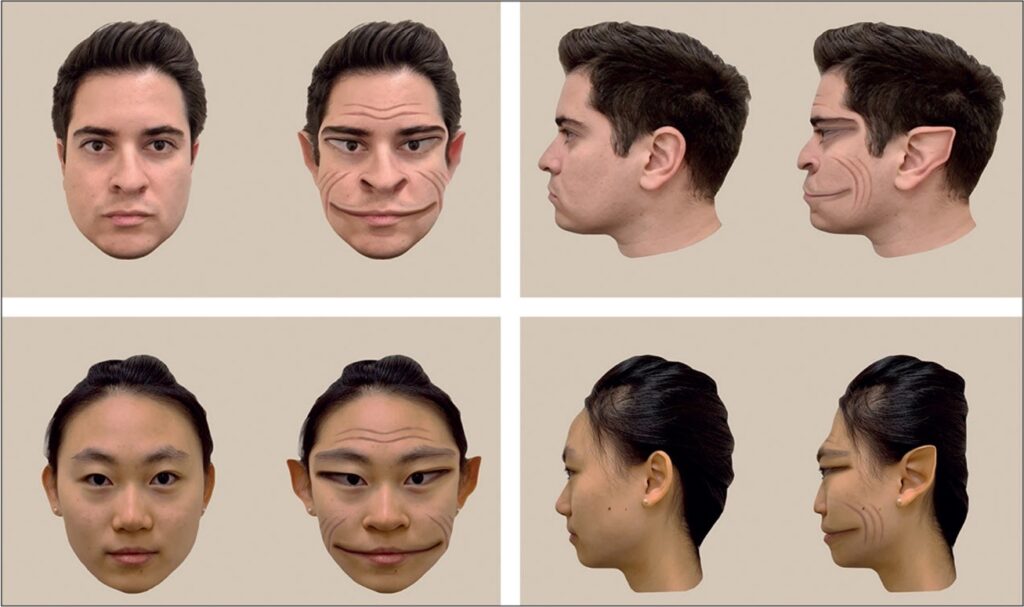
But you should definitely get your head checked.
In a case reminiscent of the 1980s cult classic sci fi movie They Live, researchers at Dartmouth College in the US have produced the first visualisations of the demonic faces seen by someone with a rare neurological disorder.
For the uninitiated, They Live is a 1988 flick from Halloween director John Carpenter and tells the tale of a man who discovers a pair of sunglasses that, when worn, reveal horrible blue aliens posing as humans.
Of course, everyone writes him off as crazy – until the aliens attack, of course.

In a clinical picture article published in The Lancet this week, researchers with Dartmouth College’s department of psychological and brain sciences relayed the story of a 58-year-old man with a 2.5-year history of seeing peoples’ faces as “demonic”.
His history included bipolar affective disorder, post-traumatic stress disorder, a significant head injury and possible carbon monoxide poisoning.
The visual distortions were not accompanied by delusional beliefs about the people he encountered. While he was distressed initially, the researchers said, he had eventually gotten used to seeing distorted faces.
Neuropsychological testing found the patient had no obvious abnormal cognitive or visual function. He scored 30/30 on a Mini-Mental State Examination, 10/10 on visual acuity and 25/25 on Ishihara colour plates.
There were no distortions when viewing non-human objects like houses.
An MRI scan revealed a 1cm round lesion on the left hippocampal head, believed to be an arachnoid cyst.
The man was ultimately diagnosed with prosopometamorphopsia, a rare neurological disorder affecting the visual perception of faces. It normally appears in the context of head trauma, cerebral infarction, epilepsy or migraine.
In a departure from the usual pattern of the disease, the patient reported no visual distortions when viewing images of faces on a screen or piece of paper.
This allowed researchers to generate photorealistic images of the distortions he experienced by asking the patient to compare an in-person face with a photograph of the same person taken under the same conditions.
The researchers were able to use his real-time feedback on the differences between the two to manipulate the photos until they matched his in-person perception.
“Such images, we believe, have not been generated before,” the researchers said.

The Lancet, published online March 23 2024
Seeing demons? Tell cate@medicalrepublic.com.au all about it.

